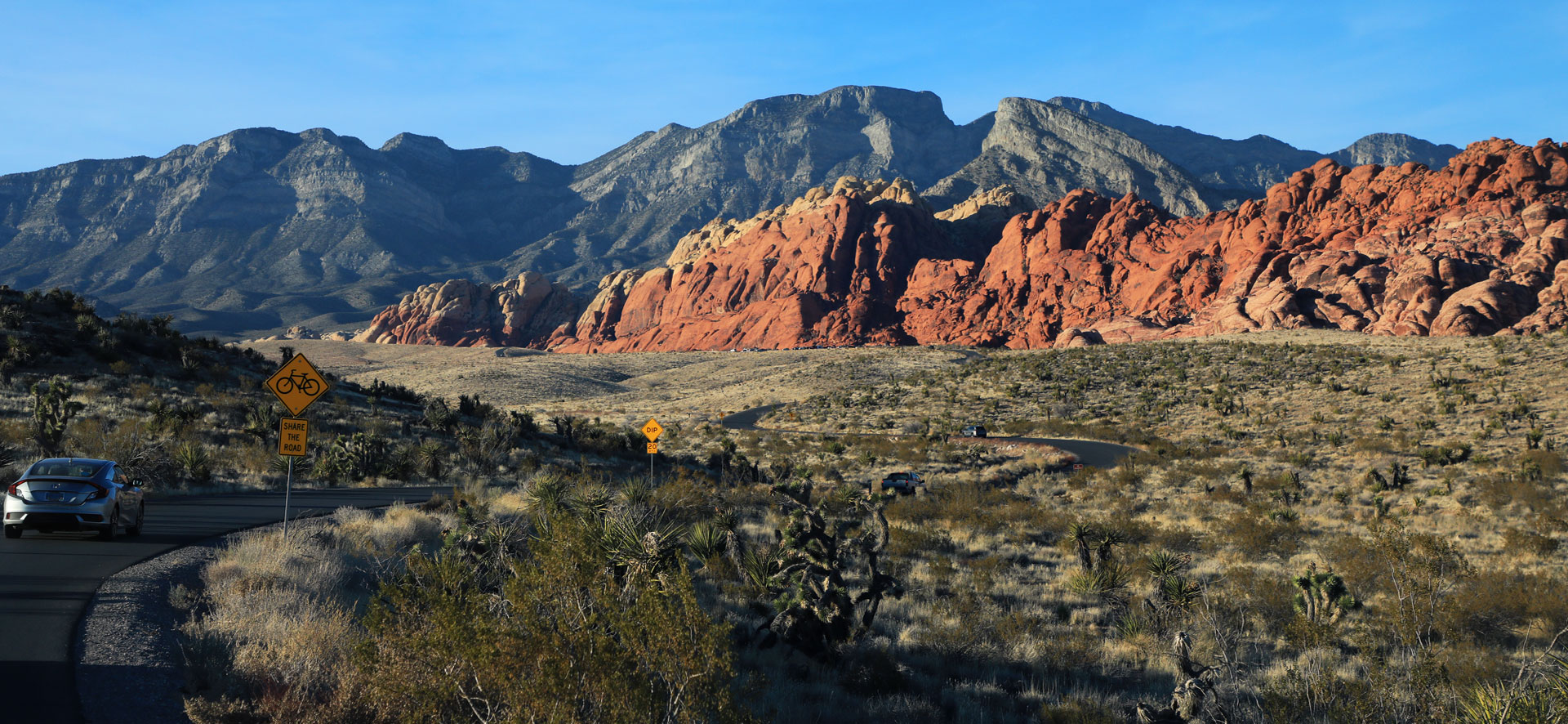What Happens In Las Vegas’ Red Rock Canyon, Can Be A Family Affair!
By Mark Wade
When visitors think of Las Vegas, outdoor family experiences is not what first comes to mind. Sin City is appropriately named, but that doesn’t mean that the Las Vegas area doesn’t offer some excellent outdoor destinations, and the Red Rock Canyon National Conservation Area is one such option. Located on the western edge of Las Vegas, Red Rock Canyon is an excellent outdoor getaway from the lights and glitter of the Las Vegas Strip.
At first glance the Red Rock Canyon area appears to be simply a small strip of red and white Aztec sandstone but this conservation area is actually a large horseshoe shaped valley with a beautifully paved road that cycles around the edges of the valley, connecting visitors with trail-heads and scenic viewpoints at each significant bend in the road.
Multi-Generational Outdoor Adventure:
You may not be familiar with this term, but it simply identifies the opportunity for all generations to experience the outdoors to together, and Red Rock Canyon is one example of a location where this is possible. With walking and hiking trails for all levels of ability, the opportunity to view wildlife, a visitor information center with interpretive displays, and a great scenic drive, Red Rock Canyon can be a great place for Grandma and Grandpa to have a multi-generational experience with children and grand children.
When to go?
I have a daughter who lives on the west side of Las Vegas and she loves to visit Red Rock Canyon with her children, ages four and two, as there are numerous areas where the kids can get out and do what kids do best, climb on rocks. I recently visited on two different months, December and January. On my first visit a rare snow storm frosted the area with a light covering of snow and made for a unique view. When I returned this past weekend (end of January, folks were in short sleeve shirts and people of all ages were hiking, rock climbing, cycling the scenic loop road, and I even passed a group of men with their guitars out serenading those who passed by with songs of the famous band, the Eagles. The environment on this warm afternoon in the desert was comfortable and I stayed to enjoy the afterglow of the setting sun. In winter months the afternoons will be best, while early mornings will be ideal in the summer. Keep an eye on temperatures and weather in spring and fall, but any time of day will be generally enjoyable during these seasons.
Wildlife:
Burrows, first introduced to the area by farmers, ranchers, and miners were either turned loose or escaped their owners and now inhabit the area and may be spotted near the First Creek Trail or near the Blue Diamond village. Bighorn Sheep roam the Red Rock Canyon terrain and you can consider yourself blessed if you get a chance to view these large animals as they navigate the steep rocky terrain. Desert tortoises may be spotted in spring or fall when they are not in their burrows (not to be confused with the afore mentioned donkeys). Lizards, quail. and squirrels are a delightful and common wildlife viewing experience.
Geology:
The sandstone in this area comes from ancient sand dunes that have been fossilized and then thrust upward by the slow and constant movement of the earth. Iron within the rock has rusted (oxidized) and caused the rust red coloration in parts of the sandstone. I enjoyed a section of rock by what is called the Sandstone Quarry where the rock was intermittently white and red as if a giant had taken a great whisk and stirred the sediment just before it solidified
Activities:
Hiking, road cycling, walking, photography, painting, and wildlife viewing are a few of the obvious activities to be experienced here. Rock climbing and rappelling are very common experiences as their are over 2,000 climbing routes in the area which is considered one of America’s top climbing destinations. I watched rock climbers ascend and descend large sandstone walls at the north end of the red rock section of the conservation area. The 13 mile scenic road is wide, beautifully paved and a perfect destination for a multi-loop road cycling experience.
How to prepare and experience?
I always carry a small first aid kit, and recommend that you bring sufficient amounts of water for everyone in your group. Come with snacks, and even a picnic breakfast, lunch, or dinner. Bring layers of clothing in winter and remember that summer temperatures can far exceed 110 degrees Fahrenheit (43 Celsius) so bring hats, light clothing, and even shade umbrellas. Sunscreen is a great idea for any time of year in this normally cloudless desert area.




Leave a Reply
Want to join the discussion?Feel free to contribute!